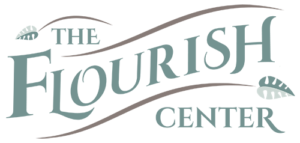
by Jen Owen, N.P. | Apr 30, 2020 | Integrative Medicine
At FLOURISH, our Nurse Practitioner, Jen Owen practices Integrative Medicine. She offers Primary and Specialty care for teens through older adults utilizing conventional medicine, functional medicine, herbal medicine, food medicine, mind-body medicine, and Holistic Pelvic Care™. Here’s what all of that means….
Integrative Medicine:
Integrative Medicine is the combination of modern, conventional medicine with natural and alternative medicine. It treats the whole person, including the physical, emotional, mental, social, spiritual and environmental influences that affect health through individual and personalized care. Includes a partnership between the patient and practitioner to find the root of the problem, rather than using bandaid treatments and generalized protocols. Learn more here….
Nurse Practitioner:
A Nurse Practitioner (NP) is a Masters or PhD educated Registered Nurse called an Advanced Practice Registered Nurse (APRN). Other APRNs include Certified Nurse Midwives and Clinical Nurse Specialists. NPs are state-licensed and nationally board-certified to diagnose illnesses, order labs and other testing, prescribe medications, and perform in the role of a primary care provider.
Primary Care Provider:
A primary care provider (PCP) is a licensed medical professional who provides both the first contact for a person with an undiagnosed health concern as well as continuing care for a variety of medical conditions and preventative care. PCPs act as “gatekeepers”, who regulate access to more costly procedures or specialists. The primary care provider determines the level of care that is needed, performs that care as appropriate, and makes referrals when needed.
Conventional Medicine:
Conventional Medicine is the care received in today’s modern society from hospital systems, doctors, APRNs, and another health care professionals. It is generally based on the treatment of symptoms with prescription drugs and surgeries. Conventional medicine is also known as modern, allopathic, western, mainstream, or orthodox medicine.
Functional Medicine:
Functional Medicine is a systems biology–based approach that focuses on identifying and addressing the root cause of symptoms. By addressing root cause of symptoms, rather than just treating symptoms, practitioners become oriented to identifying the complexity of disease. They may find one condition has many different causes and, likewise, one cause may result in many different conditions. As a result, Functional Medicine treatment targets the specific manifestations of disease in each individual.
Herbal Medicine:
Herbal Medicine is an ancient healing form using remedies and medicines made from plants. Herbal medicines come in the form of infusions (teas from flowers and leaves), decoctions (teas from roots and barks), extracts, capsules, steams, and more. Herbalism is based on historical uses and today, many herbs have had their efficacy proven with scientific studies. Herbs can be both effective and safe alternatives to prescription drugs, when appropriate.
Food Medicine:
Food as medicine dates back all the way to Hippocrates. Food medicine utilizes the vitamins and minerals in food to treat mild illnesses and imbalances. When we eat a “rainbow diet”, we fill ourselves with nutrient-dense foods instead of processed food and unhealthy foods. Most illnesses today are based on inflammation in the body. Healthy foods and a lower-inflammatory diet create a sustained level of wellness and is easier on the pocketbook.
Mind-Body Medicine:
Mind-Body Medicine is based on using the mind and feelings to cause a change in physical and emotional symptoms. Through techniques such as meditation, affirmations, Emotional Freedom Technique (EFT), and many others, stress is reduced. When a person experiences less stress, there’s often less inflammation and greater balance in the nervous, immune, and hormonal systems. There is a great deal of research in the positive effects of mind-body healing techniques.
Holistic Pelvic Care™
Holistic Pelvic Care™ (HPC) combines gentle, intra-vaginal massage with breathwork for wellness care and to treat imbalances in the pelvic area. Created by Tami Lynn Kent, this specialized therapeutic healing technique is a new paradigm in women’s healthcare, and is quickly becoming part of women’s regular health maintenance. HPC is helpful for pelvic and hip pain, women’s health symptoms, postpartum recovery, and for trauma release.
*HPC is helpful for all people who were born with female anatomy regardless of gender identification.

by Jen Owen, N.P. | Apr 25, 2020 | Integrative Medicine
One of the most frequent conversations I’ve had over the years with my patients is about how so many people are living most of their lives in the “fight or flight” response, the sympathetic nervous system.
The sympathetic nervous system is designed to help us in an emergency, like when we are running from a bear. When we become stressed, the amygdala in the brain, the center of emotional processing senses danger. As it processes this information, it sends distress signals to the hypothalamus. The hypothalamus communicates with the adrenal glands that there is a danger. The adrenals then release epinephrine (adrenaline), which circulates through the body and causes physiological changes. These changes are meant to give us increased alertness, increased energy, and increased muscle strength to maximize our chance of survival in an emergency situation.
The sympathetic physiological changes include:
Decreased saliva output
Decreased gastric secretions (bile and hydrochloric acid)
Decreased peristalsis (movement of the large intestine which produces a bowel movement)
Increased heart rate and irregular heart rhythms
Constriction of the arteries
Dilation of the lung bronchi
Increased oxygen to the vital organs and away from the non-vital areas of the body
Using glycogen to make more glucose
Inhibited bladder contraction causing decreased urine output
Increased pupil size and increases peripheral vision
This system is designed to be alerted every once and awhile and is not meant to work full-time. As the world becomes more stressed, many are alerting this system numerous times in one day or are basically “running from a bear” all the time. When these normal and helpful physiological changes become part of our daily lives, the repeated activation takes its toll on the body and many symptoms can arise.
These symptoms include:
Irregular and rapid heart rate and palpitations
Elevated blood pressure
Increased blood sugar, which leads to insulin resistance and type II diabetes
Cold hands and feet
Numbness and tingling in the extremities
Trouble concentrating
Startling easily, nervousness, and fear, leading to anxiety and panic
Blurry vision, reading issues
Elevated cholesterol
Heart disease
Constipation, abdominal bloating, abdominal pain
Urinary issues, frequent infections
Insomnia
What’s likely making all of this worse in these times is the way many people respond to stress by overeating carbs, drinking alcohol, binging on sugar, etc. When we’re in fight-or-flight, cravings increase. We need more sugary substances to maintain the elevated blood sugar and cortisol levels. We self-soothe temporarily and then we usually feel even worse. Sound familiar?
The first thing I recommend if you feel like you are in a constant state of sympathetic stress is awareness. Start to notice when these physiological changes are happening in your body. What are the triggers for you? You have to be aware of what is happening before you can change. Maybe it’s a phone call from a certain person, watching the news, scrolling through social media, or homeschooling your kids? It could be just about anything. If current circumstances are causing you to live in a constant state of stress, notice this. Notice without judgement, because our own judgement of ourselves can even put us in fight or flight.
When we are relaxed and calm, we are in the parasympathetic nervous system mode, often called, “rest and digest”. This is where we should be all the time, unless we are in a true emergency, like running from a bear.
When the parasympathetic nervous system is dominant, we experience these physiological processes:
Arteries dilated = decreased heart rate and blood pressure
Bladder contracts = urine flows normally
Increased peristalsis = bowels move at least once daily
Increased saliva and increased gastric secretions = no bloating or pain
Bronchi in the lungs are constricted leading to increased oxygen to all parts of the body = warm hands and feet and no neuropathy (numbness/tingling)
Decreased stress hormones = calm mood, restful sleep
Proper utilization of glucose = lower blood sugar, reduced insulin levels, less cravings
Once we have non-judgmental awareness of how we are reacting to stress, we can begin to do something about it. Are you living in the now or worrying about the future? Are you breathing throughout your day? Are you moving your body every day? Are you spending some time in nature every day? What about fresh air? Do you have a support system in place to decrease your stress? How much balance do you have in your life right now? Are you celebrating the good things in your life every day? Are you listening to your true inner guidance or are you trying to be what you think society or your family wants you to be?
Here are some suggestions to add to your daily life to stay in “rest and digest” mode:
Take a bath
Meditate (even 5 minutes of quiet time can be beneficial!)
Spend time being grateful for what you have now
Move your body
Laugh
Dance
Breathe. Use 4-7-8 breathing throughout the day (breath in for 4 counts, hold for 7 counts, breath out for 8 counts—repeat 4 times through)
And, if you’d like to take a closer look at how stress is affecting your body, please schedule an appointment with me. We can take a look at your blood sugar and insulin levels, cortisol levels, improve digestion, and address your stress head-on. There are many ways to encourage “rest and digest” in your body. My toolbox is full of help for you.
Please share this post widely and sign-up for our weekly newsletter below if you’re not already signed up.

by Jen Owen, N.P. | Apr 3, 2020 | Mind-Body Medicine
There’s never been a time like this before to challenge our mindset principles and practices. When I’m on a coaching call with a client, I find myself with no previous experience to draw from. It’s a strange feeling.
So, we focus on mindset.
Your mindset is all the thoughts and feelings you have about a certain situation. And by golly, there sure are varying thoughts and feelings about the situation we’re in with COVID-19. It can be very overwhelming to even scroll through social media, let alone watching the news or trying to make sense of how this is all being managed.
I’ll admit it. A couple of days ago, I found myself feeling pretty discouraged. I didn’t see how my practice could make it through this as I’m just starting into my 3rd year here in Portland, and I’ve made some significant changes along the way. I started feeling sad about how much Portland will change from this, all the restaurants and small shops that will have to close, and on and on and on. Basically, my mindset was in the toilet.
Then, yesterday, I was talking with a colleague and I was reminded that this whole thing is about resilience. Those who have the resilience to survive this will survive.
Now, to be clear, I’m not placing blame on anyone who is sick from this or who has to close their businesses or anything like that.
What I’m saying is that it takes resilience to keep going, and many of us have been preparing our resilience for some time. We have prepared by eating the rainbow diet, exercising regularly, and getting fresh air to keep our immune systems healthy. We have primed our resilience with savings accounts and “rainy day” funds. And, we have prepared by learning and mastering our mindsets. Most of us have done some of these things, but maybe not all.
I can’t help you with your savings account, but I can help you with the other two.
There’s no time like the present (and most of us have plenty of time) to start a new health regimen, get health coaching or a establish a relationship via telemedicine with that integrative medicine practitioner you’ve been wanting to see. If that person is me, you can click here to get scheduled.
Most of all, you get to decide what mindset you’re going to hold. Are you going to let this ruin you, your health, your business? Or, are you going to roll up your sleeves and get resourceful and prove your resilience?
When my recent mindset shift happened, I pictured Daenerys Targaryen from Game of Thrones. After some of the worst things that could possibly happen to a person happen to her, she walks into the burning fire and comes out unscathed and brings with her three dragons. She could have wilted away or given up all hope, but instead she does the unimaginable. Now that’s a rock-sold mindset!
It gave me this image of myself still standing after this wild ride is over. Who can you invoke or what energy can you call into your mindset to give you the resilience you require right now?
If you don’t know what I mean by mindset tools or you’re having a very hard time remaining calm and stable during this crisis, I invite you to take part in my Mindset Foundations course. It’s an 8-week course designed to give you all the tools you need to develop, grow, and sustain a mindset that will help you face and overcome anything that comes your way. I’m offering it at a 50% discount to help everyone through these times. You can click here to learn more….
Regardless, stop and take an inventory of your mindset. Are you taking on too much of other people’s energy and feelings? Are you staying grounded? Are you taking good care of yourself and using the tools you do have available?
We will get through this and I believe that having a rock-solid mindset is the best way to do it!
Please share this post with anyone who might need a little mindset pep talk today, as well, and let me know how I can support you and your mindset.




Recent Comments